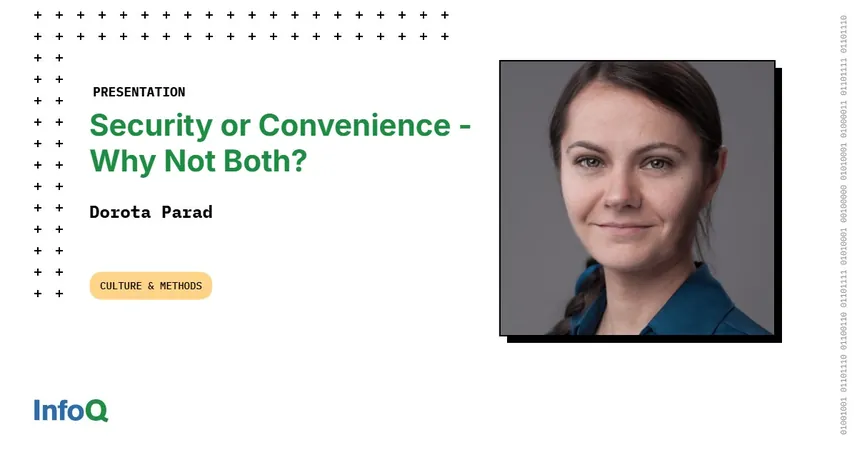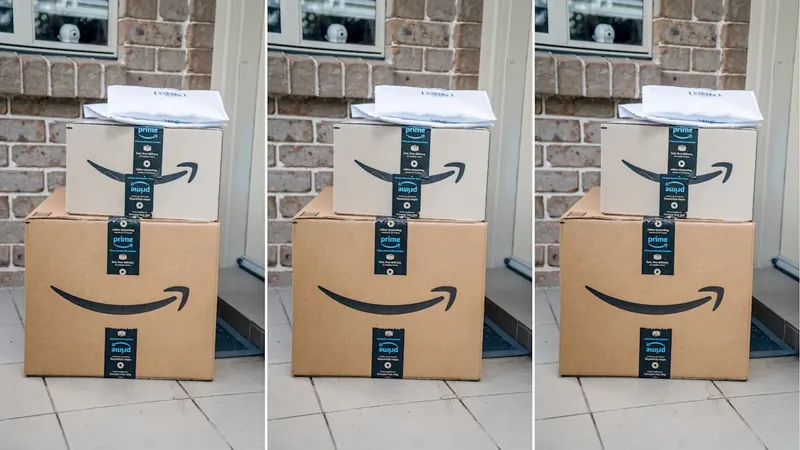
Unlocking Productivity: Can We Have Security Without the Headaches?
2025-07-03
Author: Amelia
The Engineer's Dilemma
Picture this: it's Saturday night, and you, an engineer, are jolted out of your weekend by an urgent alert about a critical issue affecting multiple customers. You’re familiar with the service—it’s your brainchild! But getting started on fixing it? That’s where the hassle begins.
You fire up your company-issued laptop, which feels like a dinosaur—slow and clunky, with an outdated operating system you loathe. Oh, but wait! You have to change your password first. After several frustrating attempts, you finally log in and try to access your incident management portal. But alas, the site is down, and you have to connect to the VPN. Another failed login later, you finally get through.
The Productivity Tug-of-War
As you dive into the incident report, your excitement wanes when you discover the issue is intermittent. You lack access to production which means you can’t test the problem at its source. So, you venture into the testing environment only to find it’s a disorganized mess! A few quick tweaks in the cloud console could solve your problem, but guess what? You lack the permissions.
After a half-hour of wrestling with the cloud console, you manage to grant yourself access and dig deeper. It turns out a library you use has been updated automatically. You make the changes, but of course, the build fails due to a vulnerability scanner spitting out errors no one pays attention to. After a few more retries, it finally passes, yet the deployment fails yet again. The cycle of frustration seems unending.
Security vs. Convenience: The Old Guard's Way
This saga illustrates the often-painful sacrifices we make in productivity for the sake of security. Traditional mindsets envelop security in layers of protection that hinder engineers’ workflow and create 'security theater'—a false sense of security that complicates more than it protects.
Introducing BLISS: The Framework for Balance
Imagine a different approach—one that focuses not just on security, but also on maintaining productivity. Meet BLISS, a framework designed to retain both security and ease of use. Here’s how it works:
- **B for Bulkheads:** Just like submarines use bulkheads to seal off compromised areas, software should have similar features protecting different services.
- **L for Levels:** Not all data is equally sensitive. A tiered approach to protection allows for more flexible and balanced security measures.
- **I for Impact:** When breaches occur, focus on minimizing their impact rather than just preventing them. What can attackers actually do with this access, and how do we contain the fallout?
- **S for Simplicity:** Complicated security measures often lead to workarounds. The simpler the security protocols, the easier they are to implement.
- **S for Pit of Success:** Create an environment where doing the right thing is the easiest option. Security barriers should be an obstacle for potential attackers, not your engineers.
Transforming Security Practices
Let’s revisit our sad engineer scenario with BLISS in mind. Instead of a cumbersome device locked down tighter than Fort Knox, what if engineers had the freedom to use their own machines with simpler security measures like biometric logins? Bye-bye, clunky devices; hello, productivity!
Without complex MDM software or an oppressive password policy, engineers could focus on real security concerns, like safeguarding code and credentials more effectively. How about prioritizing based on practicality and ensuring everyone accesses only what they need?
The Road Ahead: Balancing Convenience and Security
As we move towards more efficient and secure systems, let’s recognize that security shouldn’t come at the cost of productivity. Striking a balance between the two can not only enhance engineers' experiences but can ultimately lead to safer and more successful businesses as we embrace innovative frameworks like BLISS.









 Brasil (PT)
Brasil (PT)
 Canada (EN)
Canada (EN)
 Chile (ES)
Chile (ES)
 Česko (CS)
Česko (CS)
 대한민국 (KO)
대한민국 (KO)
 España (ES)
España (ES)
 France (FR)
France (FR)
 Hong Kong (EN)
Hong Kong (EN)
 Italia (IT)
Italia (IT)
 日本 (JA)
日本 (JA)
 Magyarország (HU)
Magyarország (HU)
 Norge (NO)
Norge (NO)
 Polska (PL)
Polska (PL)
 Schweiz (DE)
Schweiz (DE)
 Singapore (EN)
Singapore (EN)
 Sverige (SV)
Sverige (SV)
 Suomi (FI)
Suomi (FI)
 Türkiye (TR)
Türkiye (TR)
 الإمارات العربية المتحدة (AR)
الإمارات العربية المتحدة (AR)